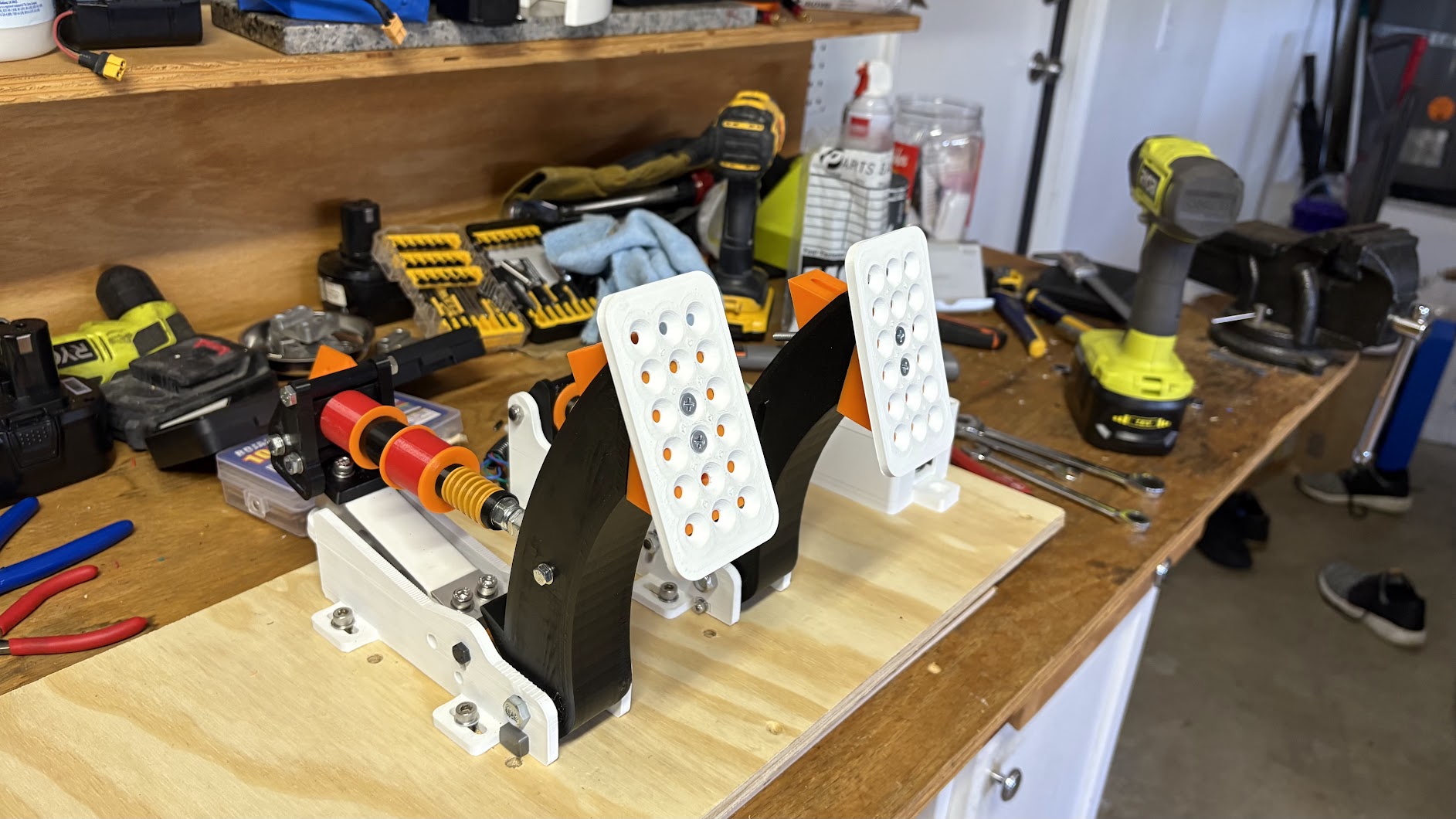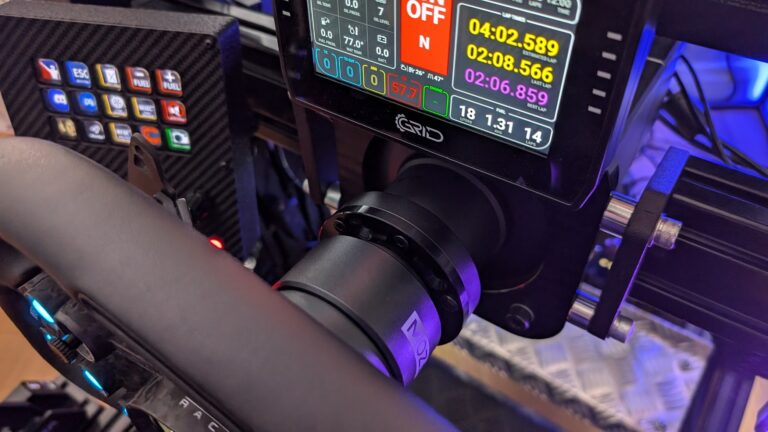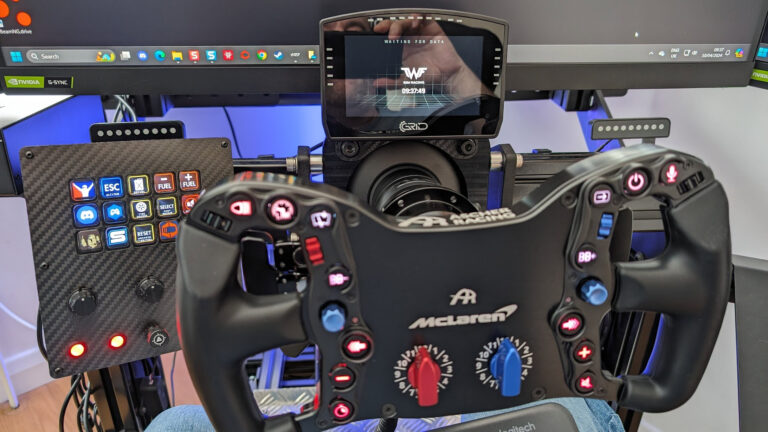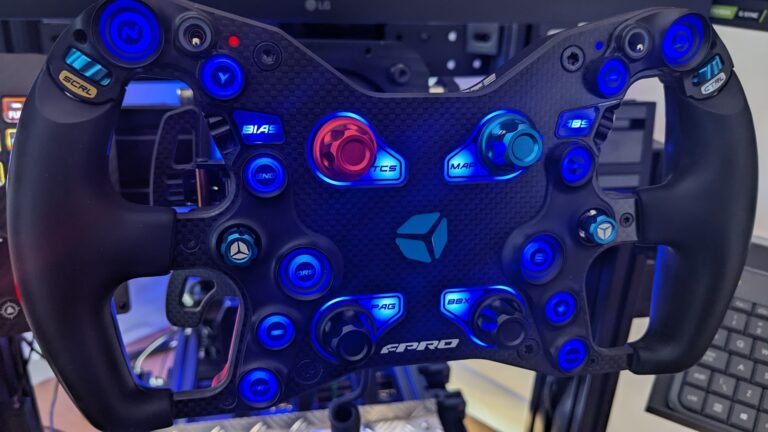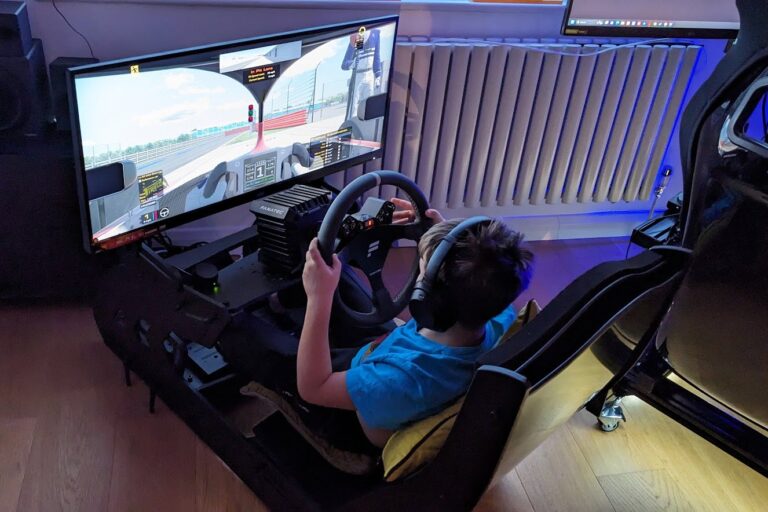Featured Image: DIY 3D printed sim racing pedals with Arduino and load cell (credit: gradedkittyfood)
In an era where entry-level direct drive wheelbases start at £400 and load cell pedals command another £300, one enterprising sim racer has proven you can build professional-grade equipment for the price of a tank of petrol. Using 3D printing, Arduino boards, and a salvaged hoverboard motor, this remarkable build delivers up to 15Nm of torque and proper load cell braking.
The project, shared on Reddit’s sim racing community, demonstrates what’s possible when engineering knowledge meets maker enthusiasm. More importantly, it opens the door for a new generation of sim racers who might otherwise be priced out of the hobby.
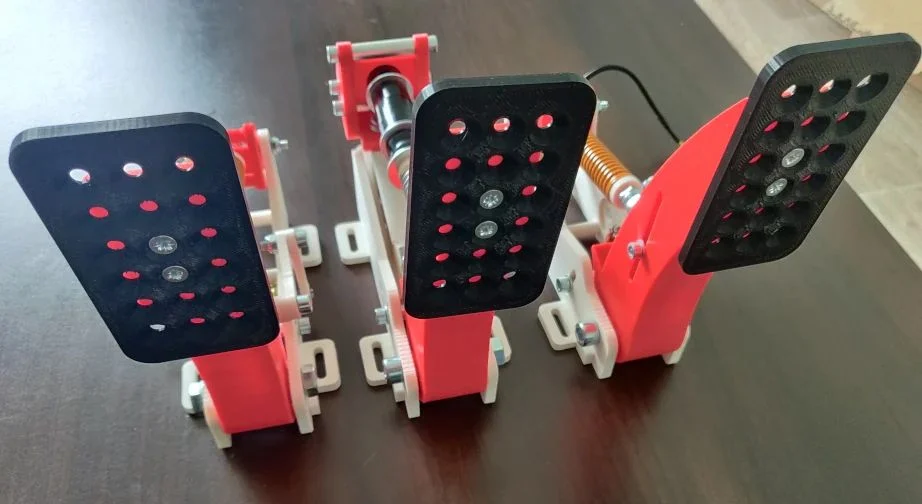
The Power of Open-Source Sim Racing
What makes this build particularly special isn’t just the cost savings – it’s the growing ecosystem of open-source designs making high-end sim racing accessible to anyone with a 3D printer. The builder sourced their pedal designs from DIY Sim Studio, whilst the direct drive wheelbase leverages the incredible FFBeast community project.
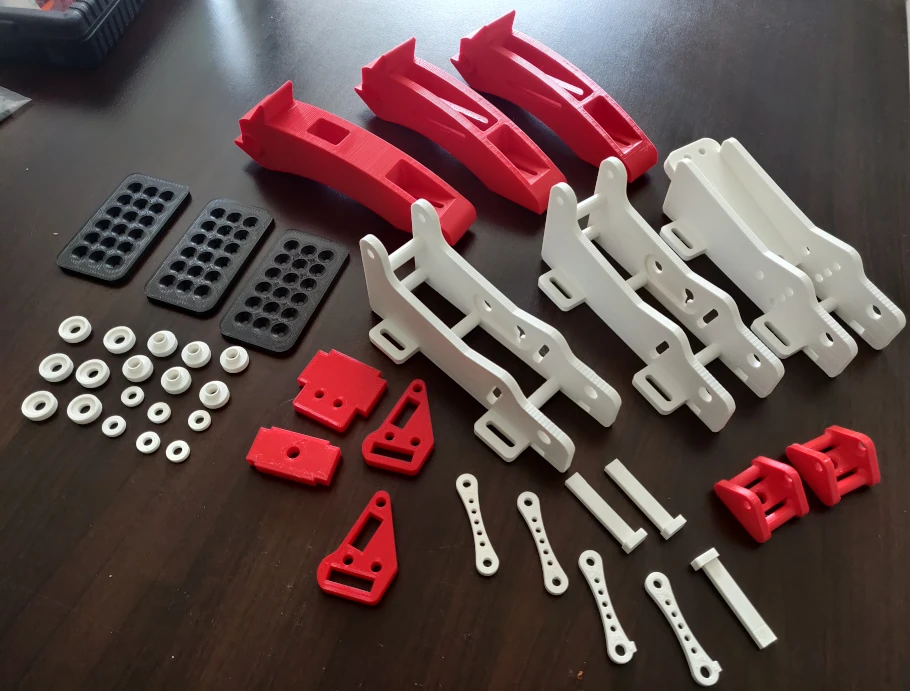
The FFBeast project, is really innovative and thrifty. By repurposing hoverboard motors, which can deliver anywhere from 8 to 15Nm of torque, they’ve created a pathway to direct drive performance that would have seemed impossible just a few years ago.
Compare that to commercial offerings: the Fanatec CSL DD delivers 5Nm (8Nm with boost kit) for £350, whilst this DIY solution potentially offers nearly double the torque for a third of the price.
Breaking Down the Build
The Pedals: Where It All Started
Perhaps the smartest decision was beginning with the pedals. Using metric hardware (though the builder notes SAE equivalents from local hardware stores work fine), the design incorporates a genuine load cell for the brake – the same technology found in pedals costing £500 or more.
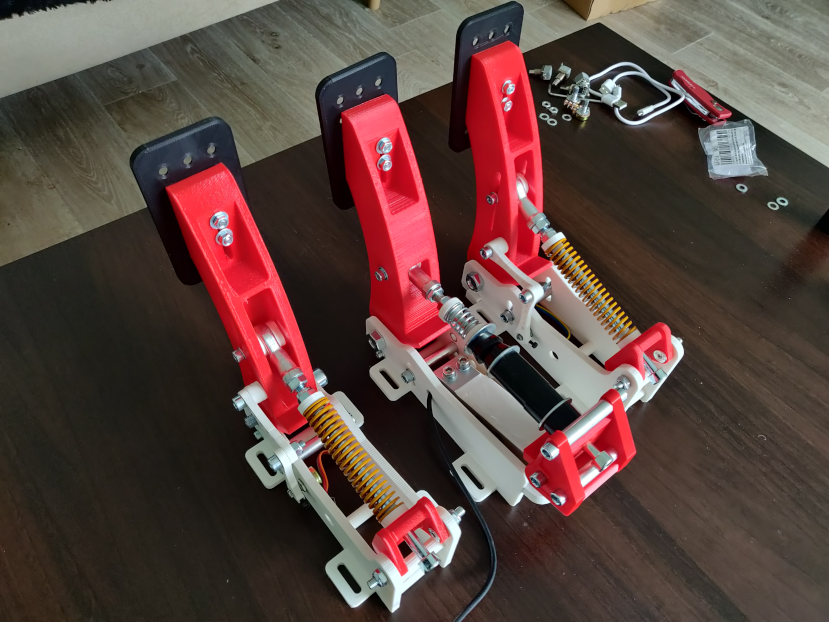
The secret sauce? A Sparkfun HX711 amplifier for the load cell (the builder specifically warns against cheaper alternatives) and custom TPU elastomers printed to dial in brake feel. Add some lubricant to eliminate squeaks, and you’ve got pedals that wouldn’t look out of place next to offerings from Heusinkveld or Simforge.
The Wheel: Surprisingly Straightforward
Using free plans from DIY Sim Studio, the F1-style wheel incorporates magnetic paddle shifters and a full button box. The builder’s pro tip: skip 3D printed threads entirely and use heat-set inserts for durability. Given it’s attached to a 15Nm motor, this attention to strength matters.
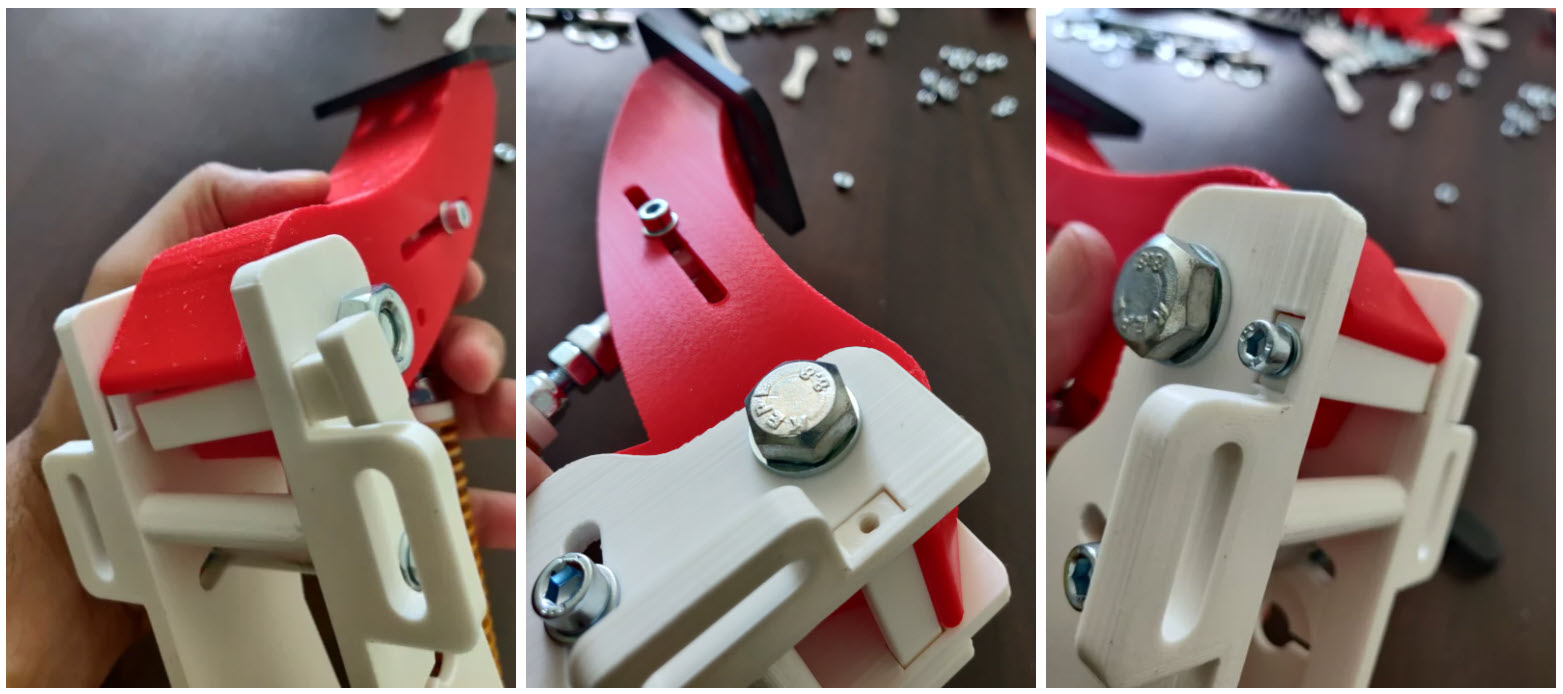
The Wheelbase
This is where things get properly technical. The FFBeast project has essentially reverse-engineered commercial direct drive technology using ODrive motor controllers (or cheaper MakerBase alternatives) and hoverboard motors. The challenging bit? Drilling an 8mm hole precisely into the motor shaft for the encoder mount. Definitely a job for someone with a lathe or very steady hands (or find some similar scrap and practice a few times at least!)
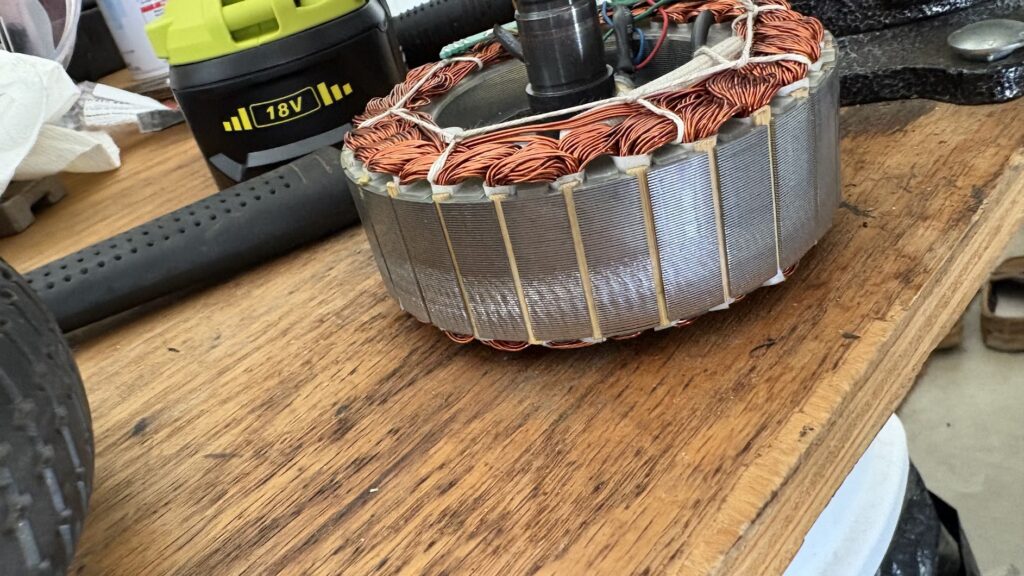
The entire system runs on a beefy 24V 20A power supply (housed in a custom 3D printed case after the builder’s painful high school encounter with exposed PSUs). SK16 shaft mounts and a custom PCB breakout board from FFBeast tie everything together into something that looks surprisingly professional.
The Maker Movement Meets Sim Racing
What’s particularly exciting about this build is how it represents the convergence of several maker communities. The sim racing world is meeting 3D printing enthusiasts, Arduino tinkerers, and open-source hardware developers. The result? A democratisation of what was once an expensive, niche hobby.
For those inspired to start their own build, the entry barriers are lower than you might think. A decent 3D printer like the Bambu Lab A1 mini (around £299) or the Creality Ender 3 V3 SE (£199) can handle all the printing requirements. Most parts use PLA with high wall counts and infill, though the builder suggests PETG reprints for anything that breaks under load.
Where to Find STL Files and Resources
The beauty of this movement is the abundance of free and paid resources available:
- Printables.com – Home to numerous sim racing designs, including the FFBeast encoder mounts and drill guides
- Thingiverse – Classic repository with everything from button boxes to shifter designs
- Cults3D – Premium designs including complete cockpit solutions
- DIY Sim Studio – Professionally designed plans at reasonable prices
- FFBeast Community – The definitive resource for DIY direct drive builds
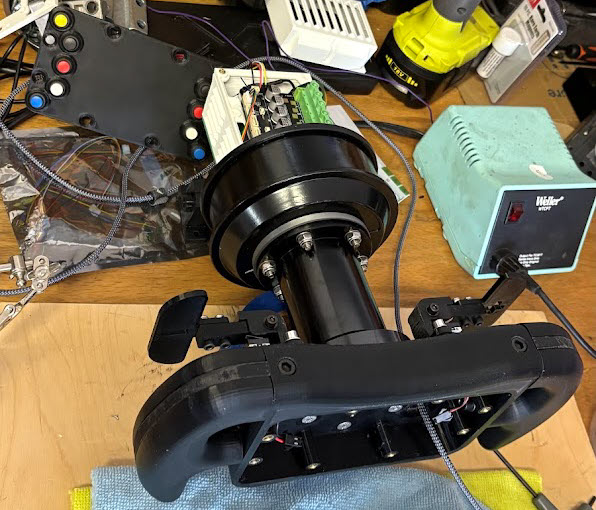
The Real Cost of Going DIY
Let’s break down the economics. The builder grabbed a broken hoverboard for £10 (they typically go for £20-50 on Facebook Marketplace). Add around £40 for the motor controller, £20 for the power supply, £15 for Arduino boards, £20 for a load cell, and perhaps £30 in hardware and filament. You’re looking at roughly £135 for a complete direct drive setup with load cell pedals.
Compare that to the entry-level commercial alternative: a Logitech G923 (£350) offers 2.3Nm of torque with potentiometer pedals. This DIY build delivers potentially six times the force feedback with proper load cell braking for less than half the price.
What This Means for Sim Racing
We’re witnessing a bit of a return to how people used to enter serious sim racing. Until Simucube, most sim racer built their own direct drive units from MiGE motors. Today, these open-source projects are enabling savvy re-use of otherwise worthless spares. The implications are profound:
- Young engineers can now build prototype equipment as learning projects
- Sim racing becomes accessible in regions where import costs make commercial gear prohibitive
- Innovation happens at the grassroots level, not just in R&D departments
- The community gains resilience against supply chain issues and discontinued products
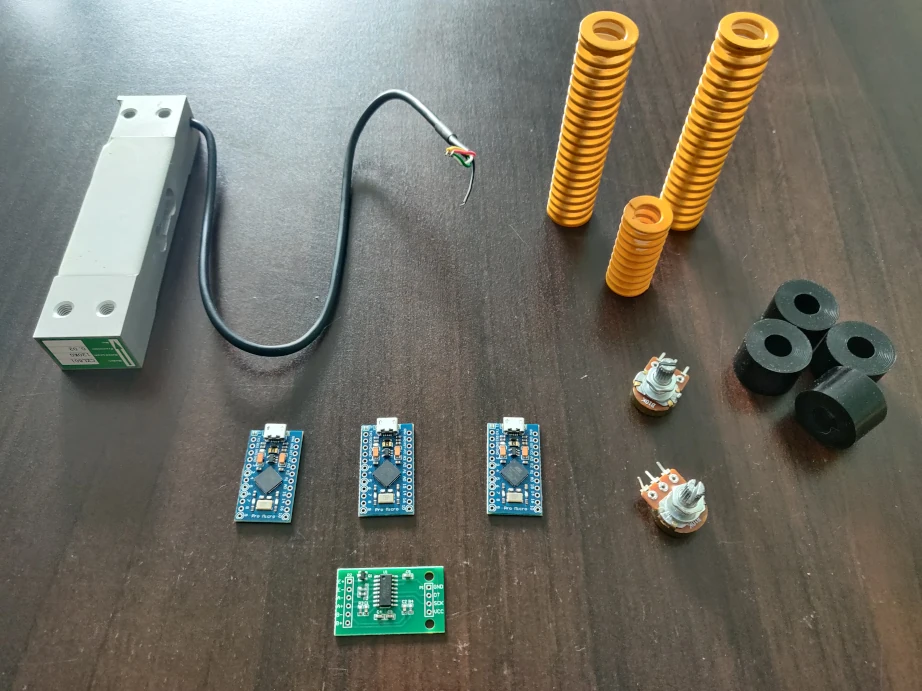
Getting Started: Your First DIY Project
If this has inspired you to dust off that 3D printer (or finally buy one), here’s where to begin:
Start Simple: Button boxes and shifters are perfect first projects. They’re forgiving, useful, and teach you the basics of Arduino programming.
Budget 3D Printers for Sim Racing:
- Creality Ender 3 V3 SE (£199) – The community favourite, endless mods available (buy on Amazon.com here)
- Bambu Lab A1 mini (£299) – Set-and-forget reliability (buy on Amazon.com here)
- Anycubic Kobra 2 (£179) – Great value with auto-leveling (search for this on Amazon)
- Sovol SV06 (£219) – Open-source design with premium features (buy on Amazon.com here)
Essential Tools: Beyond the printer, you’ll need a soldering iron (£20), heat-set insert tool (£15), multimeter (£15), and basic hand tools. Budget £50-75 for the complete toolkit.
The Future is Open Source
This build represents more than just clever engineering – it’s a glimpse into sim racing’s future. As 3D printing becomes more accessible and projects like FFBeast mature, we’re approaching a tipping point where DIY solutions rival commercial products not just in price, but in performance.
The builder’s next project? A custom welded sim rig. Because once you’ve built your own direct drive wheelbase from a hoverboard, why stop there?
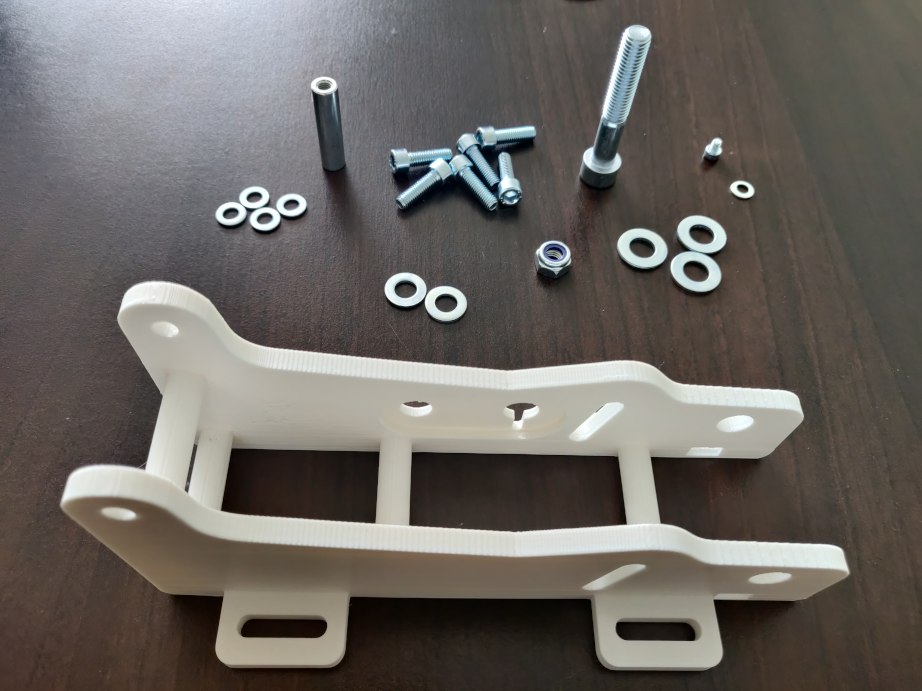
For those ready to join this revolution, remember: every commercial sim racing product started as someone’s crazy idea. Today’s DIY project could be tomorrow’s standard. The only question is: what will you build first?
Resources to Get Started:
- FFBeast Direct Drive Project
- DIY Sim Studio Plans
- FFBeast Encoder Mount STL
- Complete Build Photo Album

